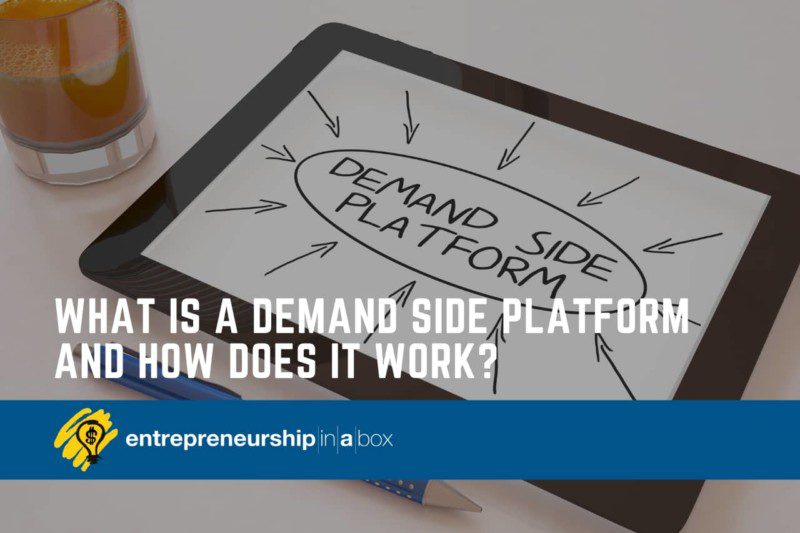Chances are you’ve heard of a demand side platform (DSP). But what exactly is a DSP?
What does it do, how can it help you, and how does it work? In most cases, DSP act as middlemen between sellers and consumers, matching the two together.
Let’s take a closer look at how they work and how they can help your business.
What is a Demand Side Platform?
DSPs are used by agencies and advertisers to purchase ad space programmatically. In other words, DSPs automate the process of buying ad space, making it more efficient and effective.
DSPs work by connecting to ad exchanges and real-time bidding (RTB) systems. By doing so, DSPs have access to billions of ad impressions that are available for purchase in real-time.
Using data and algorithms, DSPs then help advertisers identify which ad impressions are the most valuable and likely to result in a conversion.
How Does Programmatic Advertising Connect?
Programmatic advertising is a form of digital marketing that uses software to automate the buying and placement of online ads. Programmatic media buying platforms use data and algorithms to purchase ad inventory on behalf of advertisers in real-time. This type of automated ad buying allows for more efficient targeting of potential customers and results in lower costs for advertisers.
DSPs are typically used by larger businesses or advertising agencies that manage multiple clients’ programmatic ad campaigns. However, some DSPs (such as Google’s Display & Video 360) also offer self-service options that can be used by smaller businesses or even individuals.
Most programmatic ad buying takes place through real-time bidding (RTB), which is a type of auction where advertising space is bought and sold on a per-impression basis. In RTB auctions, advertisers specify the maximum amount they’re willing to pay for each viewable impression (CPM) and the advertiser whose bid wins gets their ad displayed.
How DSPs Benefit Advertisers
There are many benefits of using a DSP for digital advertising. Perhaps the most important benefit is that DSPs help advertisers save time and money. Buying ad space manually is very time-consuming. It can also be expensive if you’re working with an agency that takes a cut of your budget.
DSPs also give you more control over your campaigns. With a DSP, you can set your own budget and customize your targeting options to make sure your ads are being shown to the right people. You can also track your campaign’s performance in real-time and adjust your strategy on the fly if necessary.
Finally, DSPs provide access to insights that can help you improve your overall marketing strategy. By seeing which ads are performing well and which aren’t, you can fine-tune your campaigns to get the best results possible.
Quick Tips on Using Demand Side Platforms for Your Business
There are many benefits to using a DSP, but it’s important to understand how they work before getting started. With that in mind, here are three quick tips on using DSPs for your business.
1. Define Your Goals
Before you start using a DSP, take some time to define your advertising goals. What are you trying to achieve with your digital ads? Are you looking to generate leads, drive traffic to your website, or increase brand awareness? Once you know what you want to accomplish, you can start developing targeted campaigns that will help you reach your goals.
2. Set a Budget
DSPs allow you to set a budget for each campaign, so it’s important to determine how much you’re willing to spend before getting started. Keep in mind that your budget will be divided among the various channels and websites where your ads will appear, so make sure to leave some room for experimentation. It’s also important to remember that bids will fluctuate depending on the time of day and the specific audience you’re targeting, so don’t be afraid to adjust your budget as needed.
3. Target Your Audience Carefully
When creating a campaign in a DSP, you’ll have the opportunity to target specific audiences based on factors like age, gender, location, interests, and past browsing behavior. It’s important to take advantage of these targeting options in order to reach the people who are most likely to be interested in your product or service.
However, don’t get too bogged down in the details—sometimes it’s best to start with a broad audience and then narrow it down based on results.
Final Thoughts
If you’re looking for a way to improve your digital advertising campaigns, a demand side platform could be the answer. DSPs offer many benefits, including time savings, cost savings, better control over campaigns, and access to valuable insights. If you’re ready to take your digital advertising to the next level, consider using a demand side platform.





